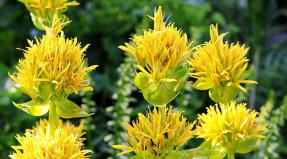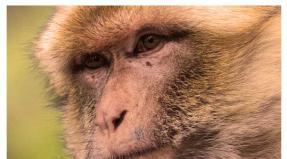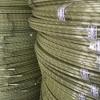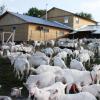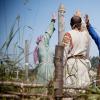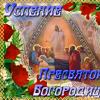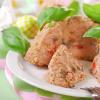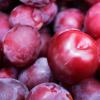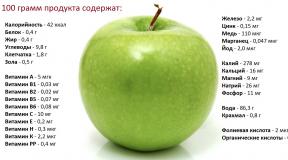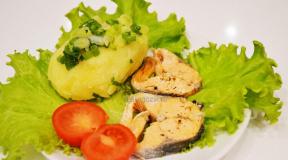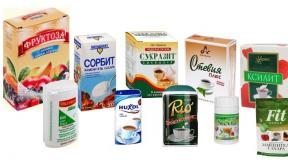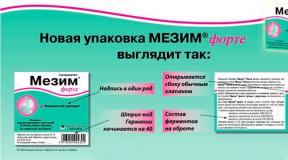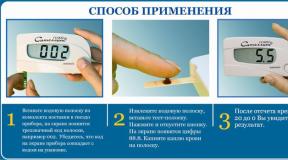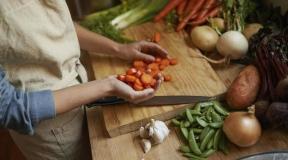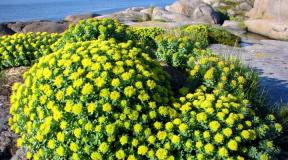Presentation for the lesson "how to help the birds in winter." Presentation on the topic "how to help birds in winter" Topic: "How to help birds in winter?"

















































 Back forward
Back forward
Attention! The slide preview is for informational purposes only and may not represent the full extent of the presentation. If you are interested in this work, please download the full version.
Target: to acquaint with wintering birds, with the arrangement of feeders and the correct selection of feed.
Expected results: students will learn to recognize wintering birds, select bird food and make bird feeders.
Educational materials: PC, interactive whiteboard, presentation “How to help birds in winter?”, A. Pleshakov: World around. 1 class. In 2 parts. Part 1. Textbook. GEF, A. Pleshakov: The world around. 1 class. Electronic supplement to the textbook by A. A. Pleshakov (CDpc), A. Pleshakov. The world. Grade 1: Workbook, Pleshakov, Gara, Nazarova: The world around. Tests. Grade 1: allowance for students of educational institutions; milk or juice bags, scissors, ruler, rope, pencils.
I. Organizing time.
II. Knowledge update.
U. Guess the riddles:
Kvohchet, quohchet, calls the children,
Collects everyone under the wing (chicken).
blue scarf,
dark back,
Small bird,
Call her ... (titmouse).
E. Serova
Gray little lump
- Chick-chirp! He is very cold!
Sun, look out soon
Ours is waiting for you ... (sparrow)
N. Maidanik
The air is cut without effort,
Like sickles crooked wings.
Flicker - you can't see
Only ... (swift) flies like that.
P. Smolin
U. Who were the riddles about?
D. About birds.
U. Remember who they call birds?
E. Birds are animals whose body is covered with feathers.
U. What groups can birds from riddles be divided into? (I - domestic and wild; II - migratory and wintering).
III. Self-determination for activity.
Reading studentsexcerptfrom the work of V. Chaplina “Forest feeder”:
Slava always walked into the forest along the same path. He had his friends here, and right after school he came to feed them. Slava made a bird feeder himself. I made it very simply: I took the bottom from the box, strengthened it in the fork of the tree, and so that the food would not be covered with snow, I made a roof out of plywood. It turned out to be a good dining room for birds ...
The tits always appeared first. As soon as Slava whistled, they were already right there. Next came a nuthatch... He didn't even wait for Slava to put the seeds in the feeder. He snatched them right out of the boy's hands and quickly flew away with prey. Then he stuffed the seeds into a crevice in a tree or into a crack in the bark and again hurried to Glory. Such credulity pleased Slava: it was very pleasant to feel a bird on his hand. Having fed his pet, Slava stepped aside and watched the birds for a long time ... The tits loved bacon most of all. They immediately flocked to him, but they always pecked in turn, they also took the seeds in turn. But the waxwings and bullfinches descended to the bunches of mountain ash laid out for them in a flock. The bullfinches pecked at the mountain ash slowly, ate the seeds, and threw away the pulp, not like the crested waxwings: they swallowed the berries hastily, whole, then immediately fell off the tree and flew away.
February came with its blizzards, snowstorms, frosts. Slava knew that this month is especially difficult for the birds. For a long time they have pecked those seeds that have remained since autumn on trees and bushes. And from the ground covered with deep snow, it is difficult to get food. Birds are hungry this month, and a frosty day for a hungry bird is death. That is why Slava went to feed his pets even in bad weather.
But one day from the very morning there was such a blizzard that there was no point in even thinking of going into the forest. It blew all day, and only in the evening it calmed down. The night was clear, starry, and in the morning the thermometer showed minus 36 degrees ... The house was warm and comfortable. “It's great that it's cold!” - Slava thought ... and suddenly remembered: yesterday there was a blizzard, today it's frosty, but how are they ... birds? He's warm and well-fed here, but they... Slava took his skis and a bag of food and resolutely left the house.
It was as if all life in the forest had died out... The birds hid from the freezing wind and cold. Only the trees crack from the frost. Hurry, hurry Glory, and the closer, the more restless in his soul. Here is ... a feeder ... But the birds did not meet their friend. With difficulty moving lips naughty from frost, Slava began to call them with a whistle. For a long, very long time no one responded to the whistle of the boy, then one titmouse flew in ... another ... two more. They were somehow disheveled, immediately rushed to the fat and began to peck it greedily ... Slava was waiting for the nuthatch, but his pet still did not appear. I didn't have the strength to wait any longer, the cold was taking my breath away. With numb hands, he poured the rest of the feed into the feeder, turned to go to the house, and ... what is it? Away from the tree, like a plucked leaf, something small, brown spread out on the snow ... It was a nuthatch. Slava rushed to him, picked him up, pressed him to himself, tried to warm his motionless body with his breath. Really died? And suddenly he felt the nuthatch tremble a little. Alive! Hurry, hurry home! Hurry to the saving warmth! ..
U. What did you learn from the story about the birds? What did Glory do? What can you say about the boy? (Answers of children). Guess what the lesson will be about?
E. The lesson will be about the life of birds in winter and how you can help them. U. Read the topic of the lesson in the textbook p.74. Read, what learning objectives will we set in the lesson? (Answers of children).
IV. Work on the topic of the lesson.
1. Teacher's story, presentation demonstration 1 - 2 slides.
U. Birds can remain active in the cold season, but they need more food. Therefore, some birds leave snow-covered native places, going for wintering to warm countries. Migratory birds make regular seasonal movements between nesting and wintering grounds. The main reasons why birds fly south in winter are lack of food and cold.
2. Work with the textbook.
U. Guys, remember what birds you saw in the city or in the country in winter? (Answers of children). Consider the birds in the textbook in Figure p.74, read their names. Think about how you can recognize them. (Answers of children).
3. Teacher's story, continuation of the presentation demonstration 3 - 43 slides.
U. In winter, not all the bird world leaves their homeland, some put up with snow and frost. Such birds are called wintering. These are mainly those who eat fruits and seeds. Birds that find suitable conditions for existence in their homeland all year round and do not fly are called settled. They live near a person, depend on him: rock dove, house sparrow, hooded crow, jackdaw .
Pigeons live in settlements, next to human habitation. sparrows keep closer to the rest of the birds to the habitation of people. crows meat is harvested in winter . Before the snow, they fly over the forest - they remember where everything lies in order to return and satisfy their hunger, they find carrion, they call their relatives with a cry. At human habitation, crows feed on food residues in garbage dumps. Jackdaw lives in forests, in human settlements. It feeds on mouse-like rodents, carrion, plant foods, destroys nests. Jackdaws often keep with rooks and crows. They winter in settlements.
Semi-sedentary birds move small distances from their nests. This capercaillie, hazel grouse, black grouse , forty and, oatmeal . magpies prefer low-growing forests, river valleys, develop urban areas. They lead a sedentary lifestyle, in winter they make small local migrations. Magpie is an omnivorous bird. In the winter forest you can hear the chirping chickadees, pikas, nuthatches, jays, knocking woodpecker . Woodpecker - one of the useful birds of our forest, does not fly away for the winter, destroys pests all year round. The crumbs from the woodpecker's table that fell into the snow go to small birds. Does not leave the winter forest capercaillie , its main food is pine needles. black grouse and hazel grouse peck alder earrings, juniper berries, buds. Owl get fresh, still warm food. Owl hunts mice, but the main prey for him is a hare. Oatmeal lives in the forest on the edges, along the roads. In the presence of food, the birds remain for the winter, forming mixed flocks with sparrows. Most of the birds migrate to the south. In winter, they are found on the outskirts of settlements, in harvested fields and vegetable gardens.
Some birds, during a favorable winter, remain in their homeland, and in severe winters they wander from place to place. This nomadic birds: waxwings, bullfinches, Muscovy tits, nuts, tap-dances, jays, crossbills, smurfs, siskins, nuthatches. A jays , nuthatch and nutcrackers they store food for the future and find it in a hungry time in winter. waxwing - a beautiful songbird with a crest on its head. The waxwing song - the murmuring trill “swi-ri-ri-ri-ri” resembles the sound of a flute. In winter, waxwings roam, appearing in large flocks in cities, especially during the years of rowan harvest, they eat berries in large quantities. Often they completely harvest rowan, viburnum, hawthorn, buckthorn, barberry, elderberry, dog rose, juniper in the forest.
Bullfinch- male - red-breasted bird with a bluish-gray back and black head. The females are brownish grey. In summer, the bullfinch lives in dense forests and light forests. After the first snowfall, bullfinches leave their native forests and begin to roam. In winter, the bullfinch feeds on seeds and berries. Nuthatch. The top of the head is gray, the belly is white with red sides, the sides of the tail are black and white. The back is bluish-gray, a black stripe passes through the eye. The beak is sharp, the tail is short. Lives in forests, parks, gardens with old trees. Feeds on insects, seeds, acorns and nuts. It feeds on tree trunks, moving upside down, getting small insects from cracks in the bark. Stores seeds for the winter in bark cracks. Visits feeders, in parks can take food from the palm of your hand. Crossbills live in coniferous and mixed forests. In winter they make nests, hatch chicks. Crossbills feed on spruce seeds, which are taken out of the cones with the help of a beak. big tits found in the folds of the bark of insects killed by frost. Winter flocks of great tits are joined by other types of tits, pikas and nuthatches. The song of a tit is a sign of the approach of spring. You can hear it on the first sunny day of February.
Goldfinch is a sedentary bird, wandering in flocks in winter. Inhabits deciduous groves, gardens, parks. The main food in winter is the seeds of weeds and garden plants. Favorite places for goldfinches are wastelands with thickets of thistles. Chizh feeds on seeds of grasses, coniferous and deciduous trees, more often birch, alder and spruce. When the snow falls, noisy flocks tap dancer appear in the middle lane, wander through the groves and fly into city gardens.
3. Work in a notebook.
Children complete tasks in a workbook p.52.
No. 1 (connect the drawings of birds with their names with lines)
№2 (color the birds, paint over the circles near those birds that you have seen in nature).
V. Physical education.
The teacher calls the bird, if the bird is migratory - the students clap their hands, if the bird is hibernating - the students squat.
VI. Continuation of work on the topic of the lesson.
1. Conversation.
U. Listen to the verses and think about how the birds live, left to spend the winter.
Children read excerpts from poems by S. Yesenin and N. Rubtsova:
Sparrows are playful
Like orphan children
Huddled at the window.
Little birds are chilled,
Hungry, tired
And huddle tighter...
2. Here is a crow sitting on a fence.
All barns have long been closed.
All carts have passed, all carts,
It's time for bad weather.
She fusses on the fence -
Woe to her, real grief!
After all, the crow does not have a grain,
And there is no protection from the cold.
D. It is difficult for birds in winter, hungry.
U. Guess the riddle.
new hut,
Dining room for all
Calling for dinner
Eat crumbs.
(feeder)
The student reads a poem by A. Chepurov.
It is difficult for birds to winter,
We need to help the birds!
I asked to cut
spruce board,
Made with dad
The bird's canteen.
U. What can we do to help birds survive the cold?
D. Make feeders and feed the birds.
Continuation of the demonstration of the presentation 44 - 46 slides.
At . What feeders have you seen? What birds flew there? What can you make a feeder out of? Consider the feeders in the drawing in the textbook p.74 and on the presentation slides. Explain which of them are the most convenient for birds? (Answers of children).
2. Practical work in pairs “Learning to make feeders and feed birds”.
U. Read the task in the textbook p.75. What practical work tasks will you be doing now?
D. Today in the lesson we will make a feeder and learn how to pick up food.
Pupils make feeders under the guidance of a teacher according to the diagram-instruction in the workbook No. 3 p.53.
3. Conversation, work on the textbook.
U. In your opinion, what else needs to be done, in addition to the feeder, to help the birds overwinter? D. Prepare food and do not forget to put it in the feeder. U. Can any food be given to birds? Read the text in the textbook p.75. What food is suitable for birds? (Answers of children).
Continuation of presentation demonstration 47 - 50 slides.
U. Consider the drawing on p.75. What birds are depicted on it? On which tree do fieldfares sit? Why do you think these birds got such a name? What is mountain ash for birds? (Natural dining room). What other natural dining rooms do you know? (Hawthorn, barberry, elder). Thrush fieldfare- large thrush. It feeds on worms, snails, insects, rowan berries, juniper. Blackbirds can be found on the outskirts of forest parks. In warm years, rich in mountain ash, they winter in cities, keep in large flocks.
Reading the conclusion p.75 of the textbook.
VII. Reflection.
1. Answers to the textbook questions in the box p. 75.
2. Work with an electronic application to the textbook on an interactive whiteboard.
Students take turns doing the following: A). What birds come to the feeder in winter? Identify birds that may come to your feeder. B). Birds are cold and hungry in winter. Try to help them. Choose a food that is best placed in the feeder.
3. Working with tests p.28 (Nos. 73 - 75):
73. Find a thrush in the picture. 74. Which of these drawings depicts a bullfinch, waxwing and nuthatch? 75. Which picture shows a natural bird dining room?
U. What learning objectives did we set at the beginning of the lesson? Remember what you learned and what you learned in the lesson? Listen to the problem in verse and try to solve it:
bird feeder
We made for the winter
Seeds, grains were put into it.
The guests did not keep themselves waiting, -
We began to count the birds on the feeder:
Two waxwings, four tits,
Three bullfinches and one sparrow.
How many birds are there?
Answer quickly.
(children's answers)
U. The feeders that you made in the lesson should be hung on trees together with adults and added food to them all winter.
Literature.
- Maksimova T.N. The world. 1 class. Lesson developments on the course "The world around" to the teaching materials of A.A. Pleshakov. Elena Tikhomirova: Lesson developments on the subject "The world around us": Grade 1.
























Enable effects
1 of 25
Disable effects
See similar
Embed code
In contact with
classmates
Telegram
Reviews
Just a presentation from a photograph without text and any explanation of what is shown on the screen. Such powerpoint material is suitable only to accompany your story, nothing more.
Dmitry Ivanov
A good presentation that will be a great addition to your presentation, as it mainly consists of pictures of wintering birds. And also the material will help tell the kids how to feed our feathered friends in the harsh winter.
Valeria Rusakova
Add your review
Annotation to the presentation
The presentation on the topic "How to help the birds in winter" is prepared for display in the lessons of the world around and is suitable to accompany your story about birds, since the development consists of photographs of birds that survive the winter. There is also text material that will tell you how and how to help the birds in winter.
- Photos
- Birds
- What to feed the birds
For the teacher to teach
Photo set / photo report
Format
pptx (powerpoint)
Number of slides
Makarova Elena Mikhailovna
Lecture hall
The words
Abstract
Present
purpose
slide 1
Presentation prepared
Makarova Elena Mikhailovna
primary school teacher
MOU "Secondary School No. 1", Yemva
slide 2
slide 3
slide 4
slide 5
slide 6
Slide 7
Slide 8
Slide 9
Slide 10
slide 11
slide 12
slide 13
Slide 14
slide 15
slide 16
Pigeons cooed - good weather will set in.
Pigeons are hiding - to bad weather.
Slide 17
Slide 18
Slide 19
Watermelon and melon seeds can be collected in autumn. They are loved by tits, nuthatches and woodpeckers.
Slide 20
Pieces of lard are not suitable for all birds. Titmouse love fat. Only fat should not be salty. Oats, millet willingly eat tits, sparrows.
slide 21
Sunflower - especially small, but not fried - is the best food for bullfinches, tits, nuthatches and sparrows. Before backfilling in the feeder, it is better to slightly crush them.
slide 22
slide 23
From morning to late evening
Having mastered the glades of pages
Manages the book trustingly
Razdolny music of birds.
Maybe from now on
Another time will come
Istanet for the bird tribe
More cute kids?!
The birds will delight again
Ruladami heart and ear,
Make stronger friends with young naturalists
River and grove, and meadow.
From the sky to the underwater world
Let's, like the Motherland's speech,
Mind and soul noble
Protect the health of the planet!
One Diversity
We will value for a reason
Loving both Europe and Asia,
And our hometowns!
Let's save the nature of the Earth!
slide 24
FEED THE BIRDS IN THE WINTER!
Slide 25
View all slides
Abstract
Target
Tasks:
Educational:
Educational:
Developing:
Methods and techniques:
STUDY PROCESS
Organizing time.
Why? (children's answers).
Guys, what's that noise?
A titmouse appears:
Sparrow:
Titmouse:
The crow appears
Students read:
How do birds winter?
It is known that birds
There are no bathrobes,
No flannel shirts.
Many don't even have a nest:
They are in a thunderstorm, and in a hail,
And in the rain and in the cold
They sleep on the branches.
covered with snowdrifts
Mounds, yards, paths.
Birds can't find
Not a grain, not a crumb.
And now they fly weaker
Crow, jackdaw, sparrow.
What is the table among the birches
In the open air?
He treats in the cold
Birds of grain and bread
Here in this most difficult hour
Rescue birds are waiting for us.
Feed them! Warm up!
Hang a house on a bitch!
Scatter the crumbs on the snow
And then semolina ...
And the poor things will come to life!
Gliding merrily across the sky
Feathered friends fly
And sing, chirping:
"Thank you very much!"
Magpie appears:
Sparrow is unhappy:
Magpie indignantly:
Sparrow is unhappy:
No, I don't believe it anyway!
Titmouse thoughtfully:
The sparrow stood up on its paws,
Ready to charge.
Turned left, right
Did the squat right
He cleaned the fluff with his beak.
And quickly at the desk plop
Titmouse:
Sparrow:
Titmouse:
(fly away)
I live under the ledge.
(Sparrow) Slides 2-3
2) Every year I fly to you,
I want to winter with you.
And even redder in winter
I knock on wood
I want to get something.
Though hidden under the bark -
Back greenish,
Yellowish belly.
Little black cap
(Wistwings) Slides 10-11
Fidget motley,
long-tailed bird,
talking bird,
�Slide 16
.(crossbill) Slide 17
Well, who tell us
Deftly climbs the trunks:
Up and down and here and there?
Who flickers all day?
This is a bird ... (Nututatch)
The real acrobat
Feed the birds in winter
Let from all over
They will flock to you, like home,
Stakes on the porch.
Their food is not rich.
Need a handful of grain
One handful -
And not scary
They will have winter.
It's hard to see.
But in our heart there is
And the birds are warm.
Is it possible to forget:
Could fly away
And stayed for the winter
Along with people.
Train the birds in the cold
To your window
So that without songs it was not necessary
We welcome spring.
If only - only - only
If only on the planet
If only all earthlings
All living things were protected.
It's possible, it's possible, it's possible
That's probably right, right
Books of the Red for sure
Never would have.
Ah! Crocodiles! Behemoths!
Ah! Monkeys! sperm whales!
And let this river
And let in the green grove
And let in the shady forest
The hubbub of bird flocks is heard!
You remember, remember, remember
In order to save nature,
Everyone in this white world
You, as you can, help!
Literature.
Internet resources.
Extracurricular activities for first grade students
Target: To expand children's knowledge of birds, to evoke sympathy for the birds that are starving and freezing in winter, to teach them to take care of them.
Tasks:
Educational:
Formation of ecological representation of children about the world around.
To provide a more reliable basis for environmental responsibility of younger students.
Ensuring a wider and more diverse practical activity of students in the study and protection of the environment.
To generalize and expand children's ideas about the wintering birds of our region.
Enrich children's passive vocabulary. Activate the speech of children.
Educational:
Help to realize the main ethical laws of human life - love, kindness, justice to the world around.
To consolidate and generalize the idea of children about sympathy, empathy, mercy.
Developing:
To develop in children the need to communicate with nature and the outside world.
To develop in children the responsibility for "our smaller brothers."
Methods and techniques:
Playful, verbal, visual.
STUDY PROCESS
Organizing time.
Guys, close your eyes and try to imagine what you will hear (An excerpt from the recording “Birdsong” sounds).
So what have you presented now? (children's opinions are heard).
What do you think: now, in winter, you can hear such wonderful bird singing? (children's answers).
Why? (children's answers).
When do the birds sing? (When they are warm, they are full).
When you walk along a forest path, Questions overtake you in a crowd. let's eat under the snow tent.
Guys, what's that noise?
A ruffled sparrow appears: (fifth graders)
Oh save! Guard!�Who shot a snowball at me?�These nasty boys�The sparrows interfere with life.�Snowballs, then a slingshot!�But it’s not sweet for us anyway!
A titmouse appears:
Brrr! What a crackling frost! (Notices the sparrow)
Chick-chirikin! What's wrong with you?
Sparrow:
Oh neighbor! Quiet! Hush! Do you see three boys there? Heartless, angry and rude?
Titmouse:
I, neighbor, agree with you! Bird life in winter is terrible! What kind of dinner do they have? Oh, how hard it is to live in the world! What should we do? Who will answer?
The crow appears
Well, frost! Well, frosts!� Nose outside - oh-oh-oh! Even white birch trees� In a gray crust of ice.� And a hungry titmouse� Quietly crying at the window: "There is nowhere to bask and feed, No bugs, no grain. The day is smoking frosty distance� The nights are snowy and dark,� I'm freezing, I'm starving, I won't live until spring!
Guys, who can help starving birds in winter? (Children's answers). - That's right, people should come to the aid of birds.
Students read:
How do birds winter?
It is known that birds
There are no bathrobes,
No flannel shirts.
Many don't even have a nest:
They are in a thunderstorm, and in a hail,
And in the rain and in the cold
They sleep on the branches.
covered with snowdrifts
Mounds, yards, paths.
Birds can't find
Not a grain, not a crumb.
And now they fly weaker
Crow, jackdaw, sparrow.
You guys probably already guessed that our lesson today will be about birds: how to help them get through the difficult winter time. Today we will talk about the birds that spend the winter with us. They are called winter birds. Today, January 15, the very middle of winter is celebrated as the All-Russian Day of Wintering Birds.
Guys, why do we need birds in nature? (children's answers).
Birds are of great importance in nature and in agriculture, preserving cultivated and wild plants from pests, help in their pollination. It is known that the family of starlings destroys up to 24 thousand insects and their larvae per month. The cuckoo, which eats large caterpillars, May beetles, eats up to 270 thousand of them during the summer; the rook, following the plow, is able to destroy up to 400 worms. A pair of tits that have settled in the garden along with their offspring can clear 40 large apple trees from insect pests.
With the onset of winter, birds stay closer to human habitation. Why do you think? (children's answers).
On cold days, birds look for food all day long. In winter, birds are not as afraid of cold as hunger. In a short winter day, birds barely have time to satisfy their hunger. In the cold of winter, hungry and weakened birds freeze easily. If a bird does not eat for 6 hours in winter, it dies. Out of ten small birds, only two remain in severe winters. Therefore, they need help.
How can people help birds in winter? (children's answers)
What is the table among the birches
In the open air?
He treats in the cold
Birds of grain and bread
Guys, do any of you have a feeder at home?
Here in this most difficult hour
Rescue birds are waiting for us.
Feed them! Warm up!
Hang a house on a bitch!
Scatter the crumbs on the snow
And then semolina ...
And the poor things will come to life!
Gliding merrily across the sky
Feathered friends fly
And sing, chirping:
"Thank you very much!"
Hear some noise again. Probably someone else came to visit us.
Magpie appears:
Good afternoon, titmouse! Hello! Chik - chirikin, how are you? -�Well, not at all, not at all evil, �On the contrary,� They help the birds! Here!
Sparrow is unhappy:
Stop chirping magpies, About food, about an easy life, And even about good children. There are no more stupid stories in the world! until spring….
Magpie indignantly:
Chik-chirikin, You're wrong! I found out yesterday: These nice guys are called young naturalists. ,�Bread crumbs and millet!
Sparrow is unhappy:
No, I don't believe it anyway!
Titmouse thoughtfully:
But I would fly. I wanted to eat something. I was two days ago. Who is with me in the school garden?
So be it, I'll fly-� I want to eat all winter.
Let's get up and rest a little bit (Fizminutka)
The sparrow stood up on its paws,
Ready to charge.
Turned left, right
Did the squat right
He cleaned the fluff with his beak.
And quickly at the desk plop
Appear slowly, titmouse and sparrow.
Titmouse:
Ah, what a wonderful feast! Now I love the whole world! Well, business!
Sparrow:
Yes, in the garden I was convinced: “I was angry at the magpie in vain. And now I’m awake. I’ll live until spring! After all, on a full stomach� We, birds, are nonsense� And any time of the day,� And snow, and cold! Turns to the tit: Do you agree with me?
Titmouse:
Yes! I, a neighbor, agree with you! How beautiful it is to live in the world!
(fly away)
To properly feed the birds, you must follow some rules.�- During feeding, do not litter, do not leave bags, cans, boxes, etc. on the street�- Feed in the same place, preferably at the same time. The birds will arrive by this time.�- Feed regularly, daily, you can not feed from time to time. It is in frosts that food is needed every day in order for the birds to survive. - Put a little feed to feed, support the birds in difficult times. It is interesting to watch the birds during feeding, how quickly they flock, how they communicate with each other.
And now guys, we will solve riddles and remember what kind of birds we can see on our feeders and learn a lot of interesting things about them.
1) I catch bugs all day, I eat insects, worms. I don’t fly away for the winter,
I live under the ledge.
Jumping gallop! Don't be shy! I'm seasoned....
(Sparrow) Slides 2-3
Teacher: You can find out the temperature from sparrows. If the sparrows on the feeder are smooth and neat, then it is warm in the yard. And if disheveled, as if inflated - then take care of your ears and nose! It has long been noticed: if frost hits, the sparrows immediately ruffle. And for what, do you think?
So the sparrows are warmer: a layer of air increases around the body, retaining heat. And if the sparrows chirped together - wait for the thaw.
2) Every year I fly to you,
I want to winter with you.
And even redder in winter
My bright red tie (bullfinch) Slides 4-5
Teacher: In winter, a lot of bullfinches appear in our area. They come here from the northern forests. The appearance of the bullfinch is always associated with the first snow, hence the name of this bird. Red-breasted males are especially noticeable in the snow. They will sit on a tree - like red apples. As soon as it melts, the birds fly away.
I knock on wood
I want to get something.
Though hidden under the bark -
The worm will be mine! (Woodpecker) Slides 6-7
Teacher: Most often in our forests there is a large spotted woodpecker, or an ordinary woodpecker. In one day, a woodpecker can destroy 800-900 bark beetles or 50 May beetles! And the woodpecker sleeps in its nest - in a hollow, clinging to the trunk with its claws and sitting on its tail. This bird is called the "forest doctor". Why?
Guys, what is "woodpecker forge"? (A tree trunk or stump where a woodpecker hollows out a cone, extracting seeds.)
Back greenish,
Yellowish belly.
Little black cap
And a strip of scarf. (titmouse) Slides 8-9
Teacher: Tits are nimble little birds. They quickly fly from branch to branch in the bushes and crowns of trees. You can often see them sitting on branches with their heads hanging down. Tits continue to collect pests even in winter
They drive the cold birds out of the forest to the cities. �A mountain ash was attacked by a �Friendly flock...
(Wistwings) Slides 10-11
The waxwing lives in the taiga. These are dense coniferous forests. The waxwing feeds chicks with mosquitoes, which are apparently invisible in the taiga. In addition to mosquitoes, the waxwing feeds on berries of mountain ash, viburnum, and cranberries. But with the advent of winter, mosquitoes disappear, and the berries become less and less. Therefore, birds gather in flocks and fly south, to where food can still be found.
Fidget motley,
long-tailed bird,
talking bird,
The most talkative (magpie) Slides 12-13
For greater safety, magpies spend the night in flocks. They hide excess food in holes they dig in the ground. Magpies are also famous for their indifferent attitude to shiny objects. Unfortunately, magpies often settle in gardens and destroy the nests of songbirds.
Coloration - grayish, �Thievish habit.� Screamer hoarse-� A famous person.� This is ... (Crow.) Slides 14-15�
As soon as they don’t talk about this bird: stupid, and shaggy, and clumsy, and a thief!
If you want to know: what color is a raven and a raven, then know that the raven is black and the crow is gray.
That's how many birds flew to the feeder.
What other birds can we meet in our area in winter?
It has been known to us since ancient times,� That this bird is a postman (pigeon) slide 16
This is a rather beautiful bird - few people else have such a fast, confident flight. Due to their speed and ability to navigate, domesticated pigeons have long been used as a means of communication.
Who lives in the pine forest, Wears a cross on his nose? And weaves a nest at that time, When a snowstorm sings in the forest? … .(crossbill) Slide 17
Teacher: Male crossbills are red. And the females are greenish. Do you know that crossbilly chicks have a very straight beak, while their parents have a cross-curved beak? It depends on the food. Only adult birds get seeds from under hard scales of cones. And the crossbills also help the squirrel to feast on the seeds of the cones: in the cones, the birds eat only part of the seeds, the rest - the squirrel.
Well, who tell us
Deftly climbs the trunks:
Up and down and here and there?
Who flickers all day?
This is a bird ... (Nututatch)
The real acrobat
Cleans all trunks in a row. Slide 18
You may not have seen the nuthatch, but this bird lives with us all year round. This bird got its name from the word "crawl". She really crawls along the trunks of trees, but she crawls acrobaticly: both upside down and down, and turns on the go and bounces. At this time, the bird is working - looking for insects in the cracks of the tree.
It’s not enough to make a feeder, you also need to know what you can put in it.
What kind of food will we give each bird? (children's answers)
Watermelon and melon seeds can be collected in autumn. They are loved by tits, nuthatches and woodpeckers. Pieces of lard are not suitable for all birds. Titmouse love fat. Only fat should not be salty. Oats are willingly eaten by tits, sparrows. Sunflower - especially small, but not fried - is the best food for bullfinches, tits, nuthatches and sparrows. Before backfilling in the feeder, it is better to slightly crush them. You can give millet, bread crumbs (wheat only!) Slides 19-21
What do you guys think, do birds have natural dining rooms in winter? (children's answers)
Birds have natural dining rooms. For example, rowan trees. Take care of the rowan! Do not break its branches, so as not to destroy the bird's canteen. slide 22
By taking care of the birds, we protect nature. M. Prishvin said: “Protecting nature means protecting your homeland.”
The student reads the poem "Feed the birds in winter" (Alexander Yashin)
Feed the birds in winter
Let from all over
They will flock to you, like home,
Stakes on the porch.
Their food is not rich.
Need a handful of grain
One handful -
And not scary
They will have winter.
How many of them die - do not count,
It's hard to see.
But in our heart there is
And the birds are warm.
Is it possible to forget:
Could fly away
And stayed for the winter
Along with people.
Train the birds in the cold
To your window
So that without songs it was not necessary
We welcome spring.
Our lesson is coming to an end. I think that now each of you guys, near the house, by the window, will have their own feeder. Birds quickly get used to such a dining room and will become frequent guests in it. And you can watch them, make drawings and write down what you notice. Of course birds can't talk. But they will definitely thank you with a beautiful spring song and a rich harvest, which they will save from pests. But most importantly, as I think, you will become kinder, and you will treat all living things more carefully.
The most important thing is that many of you probably understood that the protection of our nature is our concern, the concern of your young generation. And a lot depends on you guys now: whether there will be forests, gardens and rivers on our planet in 10-20-100 years. Will the birds rise high up to sing their cheerful, sonorous songs. Listen to another poem and read what comes out of the first letters of each line. slide 23
Fifth graders sing a song (words for children on the table, who can read well - help):
If only - only - only
If only on the planet
If only all earthlings
All living things were protected.
It's possible, it's possible, it's possible
That's probably right, right
Books of the Red for sure
Never would have.
Chorus: Ah! Hello, the mountains are such a height!
Ah! Hello, the rivers are so wide!
Ah! Crocodiles! Behemoths!
Ah! Monkeys! sperm whales!
Ah! And a green parrot! (2 times)
And let this river
And let in the green grove
And let in the shady forest
The hubbub of bird flocks is heard!
You remember, remember, remember
In order to save nature,
Everyone in this white world
You, as you can, help!
Literature.
Newspaper “Pedagogical Council”, 2006–2008
Collection of riddles: A guide for the teacher / comp. M.T. Karpenko - M.: Enlightenment, 1988.
Newspaper "Pedagogical creativity", 2006 - 2008
Internet resources.
Kukhtina A.L. Help the wintering birds. Guidelines for the month. Komsomolsk-on-Amur: Agora, 2005.
Download abstractTopic: "How to help birds in winter"
Type of lesson: lesson-journey
Equipment: audio recording Melody of winter, presentation “How to help birds in winter”, workbook on the world around, self-assessment cards (bullfinch and crow birds), feeders, bird food (for practical work in groups).
Lesson type by goal setting:
discovery of new knowledge based on life experience.
The purpose of the lesson:
Contribute to the generalization of the life experience of students in observing wintering birds;
Consider the types of food for wintering birds;
Develop attention, memory, thinking;
To educate a responsible attitude towards nature by the example of people's possible assistance to wintering birds.
Lesson objectives aimed at the formation of universal learning activities:
Personal universal learning activities :
Formation of interest in the study of native nature;
Understanding the importance of caring for wintering birds;
Increasing the level of motivation for learning activities.
Subject Results:
1) Distinguish by outward signs birds wintering in our area.
2) Choose the right bird food.
3) Imagine how to make a simple feeder.
4) Know the rules for feeding birds.
Metasubject results:
Cognitive UUD:
- process information received from teaching aids, life experience and new knowledge in the classroom;
- observe and draw conclusions;
- know and recognize the names of birds on visual samples;
Communicative UUD:
- participate in a dialogue on the topic (teacher - student; student - student); - give examples from real life situations;
- compose your short story about helping birds in winter.
Regulatory UUD:
- define and formulate the purpose of their activities at each stage of the lesson;
- pronounce your actions in a logical sequence;
- learn to do self-assessment of their activities in the classroom.
During the classes
1. Organizational moment
Purpose: to prepare students for the upcoming work.
Teacher:
Guys, today we will go to the winter forest, to the forest clearing. And on the way, I'll tell you a story.
MELODIA (winter)
STORY:
Somehow four magic painters came together: Winter, Spring, Summer and Autumn. They agreed, and argued, which of them draws better. And they chose the Red Sun as a judge. Zima was the first to take up her magic brush.
slide 1 "Winter meadow"
She walks in the mountains, in the valleys, walks in large soft felt boots, steps quietly, inaudibly. Snow covered the ground with a white even layer. Fields and forest clearings are now like smooth blank pages of some big book. It snows during the day. End - the pages are clean. You will come in the morning - the white pages are covered with many mysterious icons, dashes, dots, commas. So, at night there were different forest dwellers here.
2. Updating knowledge
Slide -2 "Bird Tracks"
Whose footprints do you see in the snow in our clearing? (Bird tracks)
How are birds different from other animals?
Erofeev Maxim
Flocks of birds have flown
Forest in snowdrifts to branches.
That's when we waited
Our northern guests.
The winter forest does not sleep, but slumbers,
All wrapped in silver.
Without leaving this earth
Many birds are left here.
Recall from your observations which birds constantly live next to us (sparrow, crow, magpie, tit, jackdaw, nuthatch, dove, magpie, woodpecker.) (do not fly away)
What new birds have you noticed with the onset of winter? (bullfinch, waxwing, crossbill)
What are these birds called? (wintering).
What do they eat in winter? (berries, seeds - cones,
Consider birds.
slide 3 "Wintering and Migratory Birds" (read the titles)
And now, guys, we will play with you ingame. It is calledMigratory and wintering birds.If I name a migratory bird, you must raise your hands. If I name a wintering bird, you should clap your hands.
hands up (translated) clap (wintering)
crow swallow
heron titmouse
duck, swan, pigeon
sparrow, magpie
Well done, I think you can easily distinguish between wintering and migratory birds.
3. Statement of the learning problem
2 student (Vlad Usoltsev)
Feed the birds in winter
Let from all over
They will flock to you, like home,
Packs on the porch!
slide 4 "Feeder (consider)
Formulate the topic of the lesson.
Children: Lesson topic - How to help birds in winter.
slide 5 How to help birds in winter
4. Discovery of new knowledge
Listen, guys, in our clearing, someone is having a very interesting conversation.
Scene "Crossbill and Titmouse"(Ivanov K, Chavanin E).
- S: You, crossbill, why are you squealing? They hurt you, didn't they?
-K: No, titmouse, I'm happy about it.
- S: I found time to be happy.
-K: Just the right time, just right! I have chicks hatched in my nest, how cute, how good!
- S: In such and such a frost? They won't stay alive!
- K: How will they live - live! I carry spruce seeds for them, and the mother klestiha warms them like a stove. Both warm and satisfying.
Conversation:
Why was the crossbill rejoicing? (chicks appear)
- What do crossbills eat in winter? (spruce seeds)
Sinitsa (Farajev R):
And I am a tit. You can see me not only in the forest, but also in parks. I am small, like a sparrow. I have a black cap, a yellow chest, a green back and a sharp black beak. In winter, I willingly eat the seeds of spruce, pine and other plants. I often fly to your balconies and peck at paper-wrapped products. I love unsalted lard.
Teacher.
Guys, listen. Whose conversations are you listening to?
Dialogue Magpie and Bullfinch (Bullfinch, Shimanovich R Magpie -O.S.). on the head of the mask
Bullfinch: Hello, Magpie. Where have you been, where have you flown?
Magpie: In summer she lived in a dark forest, in autumn - on a light edge.
Bullfinch: And now where?
Magpie: To the village, my dear, to the village.
Bullfinch: What's wrong with you in the forest?
Magpie: Yes, my dear, yes, yes. bird nests empty for a long time, you can’t steal the eggs, you can’t grab the chick. All living creatures hid in the forest. It’s empty now there, there’s no one to rob.
Bullfinch: What is good about the village?
Magpie: Yes, my dear, but how. I’ll pull off a bone from a yard dog, I’ll dig up scraps in a landfill. I am not a proud bird.
What a magpie!
What do you know about the snowman?.......
Work in a notebook
Open workbooks on page 29
Work in pairs (you can help a neighbor)
You must guess the riddle and find the drawing of this bird in the notebook, write the first letter.
Greenish back,
yellowish belly,
little black cap
And a strip of scarf.
(Tit) slide.6
On the tree - upside down! -
Runs in blue clothes ...
(Nuthatch) slide 7
Black-winged, red-breasted,
He is not afraid of a cold -
With first snow
Right here!
(Bullfinch) slide 8
Crumbs are my food.
I'm cunning and playful
fussy,
Chiv-chiv!
(Sparrow) slide 9
Well done, well remembered wintering birds.
Fizminutka dwarfs and giants
Solve the riddle!
What is the table among the birches
In the open air?
He treats in the cold
Birds of grain and bread. (feeders)
Slide -10
- What do birds eat and what do they like?
slide 11
Why are mountain ash, hawthorn, viburnum called "natural dining room"?
5. Fixing. Application of acquired knowledge
Dinner for birds
- Practical work by groups.
Each group needs to make a dinner for a special bird.
They all have different tastes!
Look at the birds that are on your desk, make a menu for them and treat them.
(Children are divided into 3 groups in rows. A bullfinch flew to the 1st row. A sparrow flew to the second row. A titmouse flew to the third row.
Each group has handouts (in a box): sunflower seeds, pumpkin seeds, ground crackers, sweets (small), rowan berries, pieces of lard, millet.
1 row - bullfinch (seeds, pumpkins)
2 row - sparrow (millet, ground white croutons)
3rd row - titmouse (unsalted fat, white croutons)
- Why did you choose these treats? (they suit them)
- Well done, you all did a great job.
Let's see what feeders are.
Slide 12, 13, 14, 15. show real feeders
memo "How to Feed the Birds"
What rules should be observed when feeding birds in a feeder?
(Vladimirov O.)
1. Hang the feeders in places that are quiet for the birds.
2. Keep the food in the feeder constantly.
3. Feeders should be kept clean.
4. Make sure there is no snow in the feeder.
5. Remember that the main winter food: watermelon seeds, melons, pumpkins, wheat bran, oat flakes, millet, sunflower seeds (not fried, not salted), dried hawthorn berries, rose hips, crumbs white bread, unsalted lard, beef fat. You can not give black bread.
Now we know what feeders are, what they can be made from with our own hands, and most importantly, we learned how to properly monitor the "bird canteen".
7. Reflection
slide 16
We can't calm the blizzard, we can't melt the snow,
but for the birds to sing is in our hands.
Slide 17 I found out, I understood, I wanted to .....
If everything was clear and you are satisfied with your work - raise the red bird, if it was difficult, something is not clear - raise the black crow!
The lesson of the environment.
Topic: How to help birds in winter?
Target: Don't leave the birds in trouble.
Tasks: 1) To acquaint with the living conditions of birds in winter.
2) To develop students' speech, the ability to observe, draw conclusions, learn to work in groups.
3) Cultivate a respect for nature, instill a love for birds.
Equipment: presentation for the lesson, notebooks, textbook. Feeding troughs made by students.
Illustrations: Wise turtle, Ant Question.
Tasks for group work.
I Organizing time.
Now check it out buddy
Are you ready to start the lesson?
Everything is in place, everything is in order:
Books, pens and notebooks?
II Topic, objectives of the lesson.
Guess what we are going to talk about in class.
These are animals whose body is covered with feathers.
But we are not talking about all birds.
Many birds fly south
Many spend the winter with us
Jackdaw, crow, bullfinch, sparrow
Come on guys, remember them soon.
Birds that stay with us for the winter,
How can you call it in one word? (wintering)
Many birds are familiar to us. Let's remember them. Guess the riddles. (Riddles on slides)
III Preparatory work.
Look out the window. What season is it now? Why?
What winter months do you know? Each month has its own characteristics, which the people expounded in songs, poems, riddles. (Children read poems about the winter months)
All trees in silver
Our river, as if in a fairy tale,
Frost paved over night.
Updated skates, sleds,
He brought a Christmas tree from the forest.
2) Winter month,
snowy month
Opens the first year
And with snow and frost
January is upon us.
And pinches the children's ears,
And paints her cheeks red
February is gone and spring is coming.
And what month is it in the yard? - what date is it today? What day of the week?
What is the weather like today, what are you seeing?
Let's think together why birds have a hard time in winter?
Let's try to understand this through proverbs and riddles.
- Name the guys, the month is in this riddle: its days are shorter than all days,
all nights are longer than nights, snows lay on the fields and meadows until spring. Only our month will pass, we celebrate the New Year.
- Snow is falling in bags from the sky, drifts of snow are standing like a house. Either snowstorms or blizzards hit the village. At night, the frost is strong, during the day the sound of drops is heard. The day has grown noticeably. Well, so what month is it?
- Pinches ears, pinches nose, frost climbs into felt boots. If you splash water, it will fall, not water already, but ice.
Even the bird does not fly, the bird freezes from the frost. The sun turned to summer. What, say for a month it?
IV Work in groups.
Insert the correct name of the month into the proverb.
(December) winter begins, and the year ends.
(January) the beginning of the year, the middle of winter.
(February) closes the winter, shows the way to the spring.
(Check with signal cards.)
Conclusion Q: What is the weather like in winter? Imagine that you have become bunnies. Show how hard it is for hares in winter?
V Fizminutka.
It's cold for a bunny to sit
Gotta warm up the paws
1,2,3,4,5 you need to warm up your paws.
It's cold for a bunny to stand
Bunny needs to jump
1,2,3,4,5 the bunny needs to jump
Someone scared the bunny
Bunny jumped and galloped away.
VI New material.
Birds are much smaller than rabbits.
Do you think it's easy for them in winter? (Children read the poem)
It is known that birds
There are no wadded bathrobes, No flannelette shirts!
Many don't even have a nest:
They are in a thunderstorm and in a hail,
And in the rain and in the cold
Sleeping on the branches
And if it snows for a long time
And the blizzard lasts a long time
Then friends have to
Pichugam is very tight.
covered with snowdrifts
Hillocks, yards, paths,
Birds can't find
Not a grain, not a crumb
And now everyone is flying weaker
Crow, jackdaw, sparrow.
Have you ever wondered where the birds spend the night? How do they behave during frosts?
Why are they lifting their feathers? Why are they moving to a person's home?
What are the benefits of birds to people?
In summer we listen to the birds singing.
What do you think birds talk about in winter?
Let's go to the winter forest and listen to their voices.
Why do you think so? Explain.
Conclusion: - How do birds live in winter? (Birds are cold and hungry in winter. There is nowhere to find food if everything is covered with snow.)
Now we will find out what other birds winter in our area. Remember what their names are. We will learn how to help the birds.
VII Presentation "Wintering Birds" and film.
VIII Fizminutka
Jumping nimble tit
She doesn't sit still
Jump-jump, jump-jump,
It twirled like a top.
I sat down for a minute
She scratched her chest with her beak,
And from the track to the fence,
Tiri-tiri, shadow, shadow, shadow!
What birds are in the movie?
IX Generalization.
Continue the sentence I started:
The titmouse has a thin beak, while the woodpecker has a (thick) one.
The crow is big, and the sparrow is (small)
The bullfinch is inactive, and the tit (nimble)
Tits incubate chicks in summer, and crossbills (in winter)
If a titmouse has a black head, what is it like? (black-headed)
If a magpie has a white side, then is it? (white-sided)
If a bullfinch has a red chest, then what is it? (red chested)
What is the name of the bird that crawls up the tree? (nuthatch)
Do you remember who sings?
Sparrow - chirps
Crow croaks
Dove cooing
Magpie - chirp
X Work with the textbook.
Textbook p.54
Consider birds. Find: waxwing, titmouse, etc.
Can these birds fly to your feeder? Color the circles.
Textbook p.55. Consider feeders.
What can you feed the birds?
Name the birds that feast in the natural dining room.
Birds love not only rowan berries, but also the fruits of ash and maple. These trees need to be protected.
XI Work in a notebook.
P.24 Did you recognize the birds?
Let's connect the name with the picture. (Help the neighbor)
XII Test.
XIII Summary of the lesson.
Today in the lesson we learned about the life of birds in winter. We have made feeders, now I am calm that you will not leave the birds in trouble. We will hang several feeders near the school and we will help the birds to winter. And the rest you hang near your houses or in the garden.
Do you think the Wise Turtle and the Question Ant were satisfied with today's lesson?
What did you like about the lesson?
What didn't you like?
Greyish in coloration, thieving in habit, hoarse screamer, famous person Who is this?
I've been catching bugs all day, eating worms. V warm edge I do not fly away, I live here under the roof. Chick-chirp. Do not be shy, I'm experienced ....
A motley fidget, a long-tailed bird, a talkative bird, the most talkative.
Who is deftly and stubbornly Climbing down with a sharp beak? This nuthatch is nimble
In front of a flock of tits.
In the midst of cold and frost He brought out the crossbill of his chicks.
Birds have a hard time in winter. Often they are starving. During snowstorms and severe frosts, many birds die of starvation. Especially often the birds die at the end of winter, when almost all the food is eaten everywhere.
Feed the birds in winter! Let from all over To you flock, as home, Flocks on the porch. Their food is not rich, A handful of grain is needed, A handful is one - and winter will not be terrible for them.
Is it possible to forget, They could fly away, But they stayed to spend the winter At the same time with people. Train the birds in the cold, To your window. So that we don't have to meet spring without songs. A. Yashin
Indeed, winter is a very difficult time for birds, especially if it is frosty and snowy. Do not find food for the birds under the snow. A hungry bird suffers greatly from the cold. In winter, the day is short, and in order to survive, not to freeze, you need to eat more food than in summer.
Seeds of various plants are suitable for feed: sunflower, melon, pumpkin, watermelon, and many weeds. But oats, millet are pecked only by sparrows and oatmeal, mainly wheat bread crumbs are also suitable for them. Rye crumbs are not suitable for birds, especially in cold weather. They turn sour in the goiter of a bird, which can lead to its death.
Municipal state educational institution secondary comprehensive school No. 3 p. Gribanovsky LESSON ON THE ENVIRONMENT: "HOW TO HELP BIRDS IN THE WINTER?" 1 CLASS FOOTPRINTS IN THE SNOW
FEED THE BIRDS
WINTER BIRDS
waxwing
Nuthatch
WINTER BIRDS
Message plan:
- 1. The name of the bird.
- 2. Appearance birds.
- 3. Special habits.
- 4. Where it lives (spruce forests, pine thicket, forest, near housing).
- 5. What does it eat.
small bird
Has legs,
Can't walk.
Wants to take a step
It makes a jump.
Chick-chirp! Don't be shy
I'm seasoned....
A greenish back, A yellowish tummy, A little black cap And a strip of a scarf.
Red-breasted, black-winged, Loves to peck grains, With the first snow on the mountain ash, He will appear again.
Only I am a bird
confess,
In the heat, frost and
Down the trunk
move
I can head down.
NUTHATCH
I'm knocking on wood, I want to get a worm, Even though I've hidden under the bark, It will still be mine!
These birds with a tuft And beautiful, moreover, They flew to the mountain ash. These birds are...
Waxwing
This bird has a crooked beak, And it builds nests in winter, Pecks seeds from cones, Who will name this bird?
What is the table among the birches
In the open air?
He treats in the cold
Birds of grain and bread.
Bird menu
- Delicious treats for birds - melon, pumpkin and watermelon seeds
Get help, kids! In this most difficult hour, the birds are waiting for salvation from us! Feed them! Warm up! Lead the house on a bitch! Scatter the crumbs on the snow. And the poor will live. Gliding merrily across the sky, Feathered friends will fly up And sing, chirping: - Thank you, great!
Literature:- 1. Volina V.V. We learn by playing. - M., - New School, 1994.- 448 p.
- 2. The world around. Grade 1: lesson plans according to the textbook by O. T. Poglazova / ed. G. E. Boldyreva. Volgograd, - Teacher, 2006.-124 p.
- 3. The world around. Methodical manual with lesson developments. Grade 1 / [A.A. Pleshakov, M.Yu. Novitskaya, N. M. Belyankova and others]. M., - Enlightenment, 2012. - 176 p.
- Internet Sources:
- 1. Free encyclopedia "Wikipedia" http://en.wikipedia.org/wiki(information about birds).
- 2. Search engine "Rambler" http://images.rambler.ru(photos and pictures for presentation).
- 3. Children's riddles about birds http://allforchildren.ru/kidfun/riddles_birds3.php

